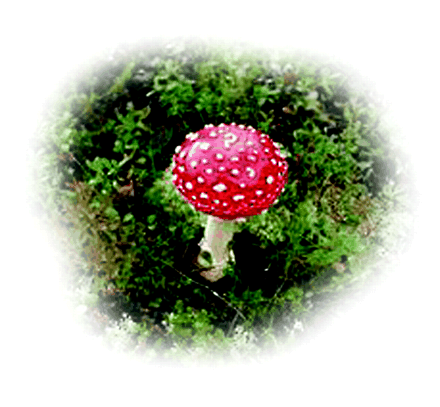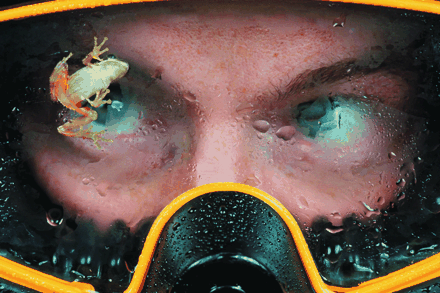In Quest of Pharmacology
Medicine Quest. Mark J. Plotkin. New York: Viking; 2000. 304 pages. $22.95. ISBN: 0670869376
Having found Mark Plotkin's prior book, Tales of a Shaman's Apprentice, both informative and a good read, I greeted his Medicine Quest with anticipation. Unfortunately, anticipation seems to get the better of the author as well, who appears barely able to finish telling one story before he starts the next. In fact, reading the book was a bit like hearing a comedy routine in which the comedian stops just before each punch line to set up the next joke. Perhaps it is a metaphor for the field of natural medicines: so much promise, so little fulfillment. Medicine Quest, subtitled In Search of Nature's Healing Secrets, continues Plotkin's crusade on the importance of ethnobotany and learning all we can about the world's native medicines while we still can; however, it is also filled with annoying and irrelevant details, non sequiturs, and unsubstantiated statements on the efficacy of certain compounds.

Nevertheless, this book is still a compelling argument for exploring the medicinal bounty of nature before it is too late. Plotkin addresses not just botany, but all realms of nature, grouped in cleverly named chapters. In “Some Poison for Your Pain?” he relates stories of how John Daly discovered the potential pain killer, epibatidine, from the South American poison dart frog, and of how Baldomero Olivera became involved in studying conus toxins from the cone snails. Interspersed are snippets about the FDA approval process, and of course, admonitions abound that the species providing these potential drugs are dying out.
Chapter 2, “The Eternal Quest,” skates over a variety of topics: the antibiotic uses of myrrh; the polymerase chain reaction and combinatorial chemistry; Symbion pandora, the organism that lives in the mouths of Norwegian lobsters; thermophilic and photophobic bacteria; and the contraceptive use of an extinct fennel by the ancient Greeks and Romans. I found this the most frustrating chapter to read because the list of fascinating topics was barely explored.
As might be expected from a chapter titled “Fungus Among Us,” chapter 3 covers the roles mushrooms and other fungi have played in medicine. The focus ranges from the well-known uses of penicillin and other antibiotics to the lesser-known uses of the fungus Cordyceps as a native treatment for impotence, backache, and as an athletic performance enhancer. The chapter finishes off with the story of the antibacterial magainins from frog skin.
“Drugs from Bugs” starts out with a story of a shaman plunging elbow deep into a bunch of biting ants to treat his arthritis. The chapter also covers the contributions, or potential contributions, of beetles, spiders, fireflies, and honeybees. “Hideous Healers” discusses the history of leeches, from their use by medieval healers as blood letters to more recent research on the anticoagulant properties of their saliva. Also clearly fitting the chapter title, maggots are covered for their role in the treatment of wound debridement and osteomyelitis. What isn't clear is why this chapter ends with an anecdote about a new type of curare isolated from Brazilian tree bark.
“The Snakes in the Caduceus” covers peptides from frogs and snakes but focuses on the effect of declining populations on the potential discovery of medicines. Here again, the chapter is peppered with anecdotes that lack substance. “Under the Sea” addresses the contributions of coral, sponges, and aquatic molds primarily as potential sources of anticancer compounds. This chapter contains one of the book's better discussions of attempts to use nature's products as models for chemical synthesis.
Despite my annoyance with the superficial treatment of many of the fascinating facts elsewhere in the book, I really enjoyed the chapter “Plants of the Apes.“ Plotkin makes the point that a natural product's medicinal qualities can sometimes be appraised by watching how it affects animals in the wild. Especially fascinating were descriptions of how animals use certain plants to “treat” their illnesses: Costa Rican capuchin monkeys rub a plant resin into their fur that repels insects; wild pigs in Asia prophylactically consume plants with antihelminthic properties; and certain birds maintain intestinal regularity by ingesting tomato-like fruits that contain a natural laxative.
Plotkin's chapter on shamans covers, much more poorly than did his book, the importance of these native healers to ethnobotany and the discovery of medicines from nature. Included in this chapter, its relevance unclear, is an account of one of Plotkin's hallucinatory journeys in response to ayahuasca. The final chapter, “The Sugar Sickness,” returns to a story from an earlier chapter where a woman in the advanced stages of diabetes was given a draft by a shaman. In the final chapter, she is active, apparently healthy, and taking the medicinal brew only when symptoms start to appear. Plotkin reports that laboratory assays of the plant source nevertheless fail to evidence any bioactivity. The take-home message is that in ethnobotanical medicine, it is usually a combination of plants, not a single component, that is efficacious. More importantly, however, it is often the culture, the environment, and the setting which combine to make a treatment effective. Plotkin thus ends his rather frustrating book with a short but effective discussion on the value of complementary medicine, in which the best of both traditional therapies and less traditional medicines work together to achieve the best outcome for the patient.

Read any good books lately? Seen any good movies?
If you have suggestions of pharmacological themes that have been treated somewhere other than science journals and textbooks, drop us a line at mi{at}aspet.org!

- © American Society for Pharmacology and Experimental Theraputics 2001



